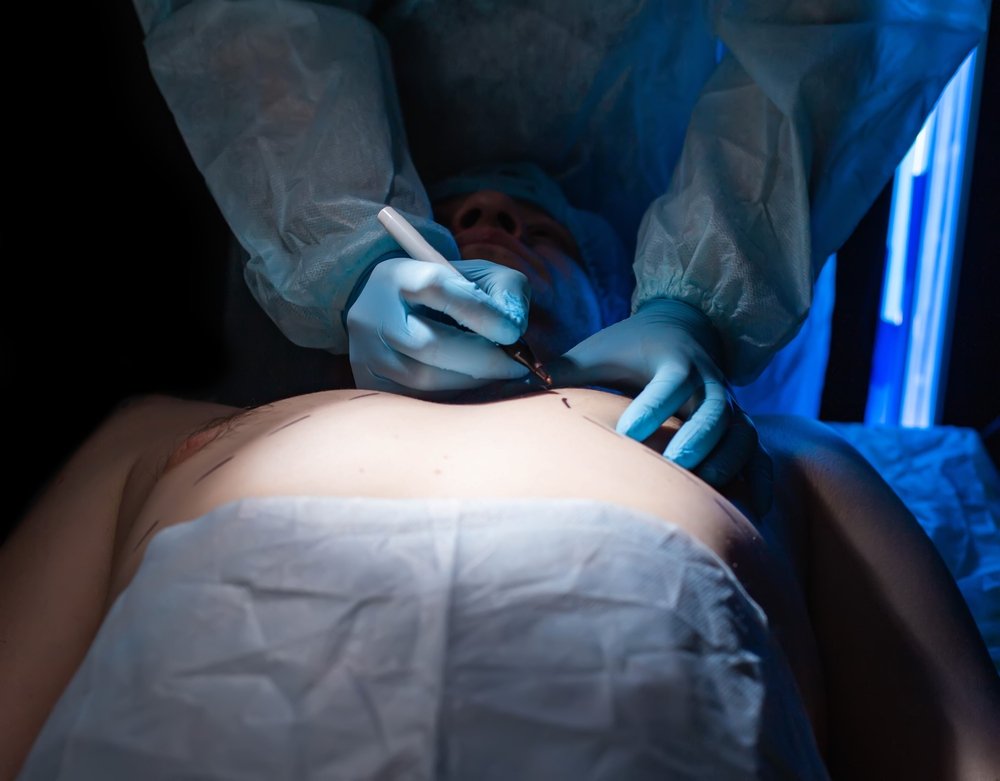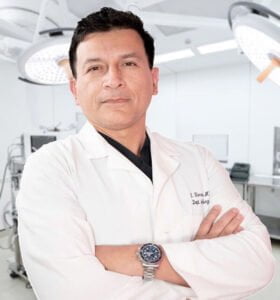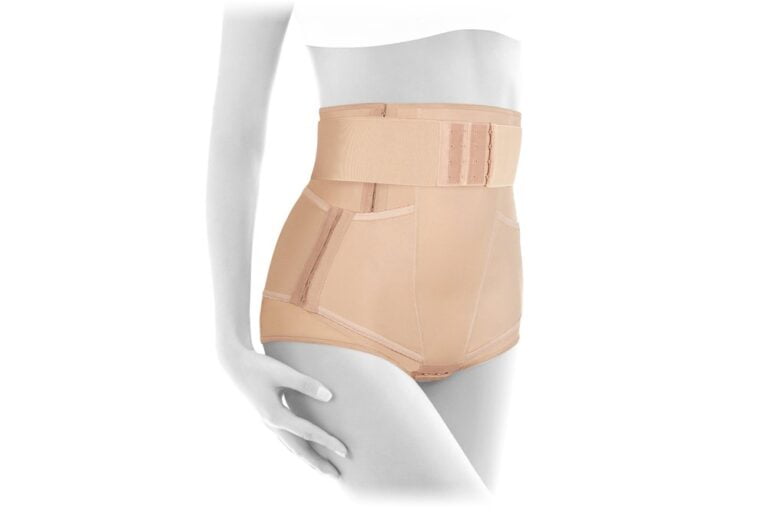The Gynecomastia surgery recovery process can vary from person to person, but it is essential to understand the general guidelines. Recovery after gynecomastia surgery involves several key aspects:
- Immediately after surgery: You will be monitored in a recovery area until the effects of anesthesia wear off. You may experience some pain, swelling, bruising, and discomfort in the chest area.
- Compression garment: Your surgeon may recommend wearing a compression garment or elastic bandage around your chest to minimize swelling and provide support. Follow their instructions on when and how long to wear it.
- Rest and limited activity: It’s important to get plenty of rest during the initial recovery period. Avoid strenuous activities, heavy lifting, and exercise for the first few weeks to allow your body to heal.
- Medication: Your surgeon may prescribe pain medication or recommend over-the-counter pain relievers to manage any discomfort. Take them as directed and report any severe or persistent pain to your surgeon.
- Follow-up appointments: You will have scheduled follow-up appointments with your surgeon to monitor your healing progress and remove any stitches or drains, if applicable. Attend these appointments as instructed.
- Swelling and bruising: Swelling and bruising are common after gynecomastia surgery and usually subside over time. Applying cold compresses or ice packs to the chest area in the first 48 hours can help reduce swelling. Avoid hot showers, saunas, or activities that may increase swelling.
- Physical activity: Gradually reintroduce light physical activity and exercise as advised by your surgeon. Start with gentle movements and gradually increase intensity over time. Avoid activities that strain your chest muscles until you receive clearance from your surgeon.
- Scar care: Follow your surgeon’s instructions for scar care. They may recommend using topical creams or ointments to help minimize scarring. Protect your incision sites from sun exposure and apply sunscreen to prevent discoloration.
- Emotional support: It’s normal to experience a range of emotions during the recovery process. Reach out to friends, family, or support groups to talk about your feelings and seek emotional support if needed.
It’s important to note that these are general guidelines, and individual recovery experiences may vary. Follow your surgeon’s post-operative instructions carefully, as they will provide specific guidance tailored to your situation. If you have any concerns or experience unexpected symptoms during your recovery, contact your surgeon for further evaluation and advice.
Current Gynecomastia Surgery Discounts in Miami Clinics
| Clinic Name | Service | Offer | Link to Offer |
|---|---|---|---|
| Boutinic Aesthetics | Gynecomastia in Miami | $500 OFF | Get Offer |
| Moon Plastic Surgery Center | Gynecomastia in Miami | 10% Discount | Get Offer |
| Miami Lakes Cosmetics | Gynecomastia in Miami | $600 OFF | Get Offer |
Immediate Post-Operative Care for Gynecomastia Surgery
Immediate post-operative care is crucial for a smooth recovery after gynecomastia surgery. Here are some important guidelines to follow during this initial phase:
| Immediate Post-Operative Care for Gynecomastia Surgery |
|---|
| 1. Monitoring and Observation |
| – You will be monitored in a recovery area to ensure stabilization of vital signs and the effects of anesthesia wearing off. Medical staff will closely observe your condition and address immediate concerns. |
| 2. Compression Garment |
| – Your surgeon may provide a compression garment or vest to wear immediately after surgery. This garment helps reduce swelling, promote healing, and provide support to the surgical area. Follow your surgeon’s instructions regarding when and how long to wear the compression garment. |
| 3. Incision Care |
| – Your surgeon will provide specific instructions on how to care for your incisions. This typically includes keeping the incision sites clean and dry, applying prescribed ointments or dressings, and avoiding activities that may disrupt the incisions. Follow these instructions carefully to minimize the risk of infection and promote proper healing. |
| 4. Pain Management |
| – It is common to experience some pain and discomfort after gynecomastia surgery. Your surgeon will prescribe pain medication to help manage any discomfort. Take the medication as directed and report any severe or persistent pain to your surgeon. |
| 5. Rest and Recovery |
| – Adequate rest is essential during the immediate post-operative period. Plan to have someone accompany you after surgery to assist with daily tasks. Avoid strenuous activities, heavy lifting, and exercise as advised by your surgeon. Resting and allowing your body time to heal will facilitate a smoother recovery. |
| 6. Hydration and Nutrition |
| – Stay well-hydrated by drinking plenty of fluids, unless otherwise instructed by your surgeon. Follow a balanced diet to promote healing and support your body’s recovery process. |
| 7. Follow-up Appointments |
| – Your surgeon will schedule follow-up appointments to monitor your progress and remove any sutures or drains, if applicable. Attend these appointments as instructed and discuss any concerns or questions you may have. |
| 8. Avoid Smoking and Alcohol |
| – To optimize healing and minimize complications, it’s important to avoid smoking and consuming alcohol during the immediate post-operative period. These substances can impair healing and increase the risk of complications. |
| 9. Emotional Support |
| – It’s normal to experience a range of emotions after surgery. Seek support from family, friends, or support groups to help you cope with any emotional ups and downs during the recovery process. |
Remember to follow your surgeon’s specific instructions and contact them if you have any questions or concerns during the immediate post-operative period.
Post-Surgery Symptoms to Expect
After undergoing gynecomastia surgery, it’s important to be aware of the common post-surgery symptoms you may experience during the recovery process. While individual experiences may vary, here are some typical symptoms to expect:
- Pain and Discomfort: It is normal to experience pain and discomfort in the chest area after gynecomastia surgery. This can range from mild to moderate and is usually managed with prescribed pain medication or over-the-counter pain relievers as recommended by your surgeon.
- Swelling and Bruising: Swelling and bruising are common after gynecomastia surgery and can be expected in the chest area. This is a natural response to the surgical trauma and will gradually subside over time. Applying cold compresses or ice packs as instructed by your surgeon can help minimize swelling.
- Tenderness and Sensitivity: The chest area may feel tender and sensitive to touch for a period of time after surgery. This sensitivity should gradually decrease as you progress through the recovery process.
- Numbness or Altered Sensation: It is not uncommon to experience temporary numbness or altered sensation around the chest area, including the nipples. This is usually temporary and resolves as the nerves heal.
- Drainage: Your surgeon may place small drainage tubes in the incision sites to help remove excess fluid and prevent the buildup of fluids. These drains will be removed during a follow-up appointment when the fluid drainage diminishes.
- Fatigue: Surgery and the body’s healing process can cause fatigue. It is important to get plenty of rest and avoid strenuous activities during the initial recovery period.
- Limited Range of Motion: You may experience some temporary limitations in your range of motion and chest mobility. This is normal and expected as the tissues heal. Follow your surgeon’s instructions on gradually increasing activities and exercises.
- Emotional Fluctuations: It is common to experience emotional ups and downs during the recovery period. This can be a result of the physical changes, the healing process, or the anticipation of final results. Seek support from loved ones or consider joining support groups to help manage these emotions.

Remember that everyone’s recovery experience is unique, and it’s important to follow your surgeon’s post-operative instructions carefully. If you have any concerns or experience unusual symptoms during your recovery, contact your surgeon for guidance and reassurance.
First Few Days: Essential Steps for Healing
During the first few days after gynecomastia surgery, taking essential steps for healing is crucial. Here are some important guidelines to follow during this initial phase:
| Steps for Healing in the First Few Days after Gynecomastia Surgery |
|---|
| 1. Follow Post-Operative Instructions |
| – Carefully adhere to the instructions provided by your surgeon, including wound care, medication schedules, and activity restrictions. |
| 2. Manage Pain and Discomfort |
| – Take prescribed pain medication as directed by your surgeon and follow recommended dosages. |
| 3. Rest and Limit Physical Activity |
| – Avoid strenuous activities, heavy lifting, and exercise that may strain the surgical area. |
| 4. Wear Compression Garment |
| – Follow instructions for wearing a compression garment or vest to provide support and reduce swelling. |
| 5. Proper Wound Care |
| – Keep the incisions clean and dry as instructed, use prescribed ointments or dressings, and avoid submerging the incisions in water. |
| 6. Hydration and Nutrition |
| – Stay well-hydrated and follow a balanced diet rich in vitamins and minerals. |
| 7. Sleep Position |
| – Sleep in a slightly elevated position with pillows supporting your upper body. |
| 8. Monitor for Signs of Complications |
| – Watch for any signs of infection or concerning symptoms and contact your surgeon if necessary. |
| 9. Attend Follow-up Appointments |
| – Make sure to attend scheduled follow-up appointments with your surgeon. |
Remember to consult with your surgeon for specific post-operative instructions tailored to your situation.
Dealing with Swelling and Bruising
Managing swelling and bruising after gynecomastia surgery is an important aspect of the recovery process. Here are some strategies to help deal with swelling and bruising:
- Apply Cold Compresses: Use cold compresses or ice packs wrapped in a cloth to the surgical area for 15-20 minutes at a time, with at least 10-minute breaks in between. Cold therapy can help reduce swelling and ease discomfort. Avoid applying ice directly to the skin to prevent injury.
- Keep the Head Elevated: While resting or sleeping, keep your head and upper body elevated with pillows. This position helps promote proper blood circulation and reduces swelling.
- Wear Compression Garment: Follow your surgeon’s instructions on wearing a compression garment or vest. The compression garment provides support, helps minimize swelling, and improves overall healing.
- Limit Salt Intake: Excessive salt intake can contribute to water retention and increased swelling. Keep your sodium intake in check by avoiding processed foods and opting for a balanced diet with fresh fruits, vegetables, and lean proteins.
- Stay Hydrated: Drinking plenty of water helps flush out toxins and promotes overall healing. Stay well-hydrated unless instructed otherwise by your surgeon.
- Avoid Heat and Sun Exposure: Heat can increase swelling, so avoid hot showers, saunas, or exposure to direct sunlight. Protect your incision areas from sun exposure to prevent potential complications.
- Gentle Massage: Once your surgeon gives you the go-ahead, gentle massage around the surgical area can help improve blood circulation and reduce swelling. Follow your surgeon’s guidance on when and how to perform the massage.
- Take Prescribed Medication: If your surgeon has prescribed anti-inflammatory medications, take them as directed. These medications can help reduce swelling and inflammation.
- Time and Patience: Swelling and bruising are normal parts of the healing process, and they will gradually diminish over time. Be patient and allow your body sufficient time to heal. If you have concerns about excessive swelling or bruising, contact your surgeon for evaluation.
Remember to follow your surgeon’s specific instructions and contact them if you have any concerns or questions regarding swelling and bruising during your recovery.

Proper Wound Care to Facilitate Healing
Proper wound care is essential after gynecomastia surgery to facilitate healing and minimize the risk of infection. Here are some guidelines for effective wound care:
- Follow your surgeon’s instructions: Your surgeon will provide specific instructions on how to care for your incisions. It’s crucial to follow their guidance carefully.
- Keep the incisions clean and dry: Gently clean the incision sites with mild soap and water as directed by your surgeon. Avoid scrubbing the incisions or using harsh cleansers. Pat the area dry with a clean towel or allow it to air dry.
- Apply prescribed ointments or dressings: Your surgeon may provide ointments or dressings to apply to the incisions. Follow their instructions on how often to apply them and the proper technique for application.
- Avoid submerging the incisions in water: Until your surgeon gives you the green light, avoid soaking in baths, hot tubs, or swimming pools. Water exposure can increase the risk of infection. However, gentle showers are generally allowed after a certain period as advised by your surgeon.
- Protect the incisions from direct sunlight: UV rays can cause pigmentation changes and affect the healing process. Keep the incisions covered with clothing or apply sunscreen (after consulting with your surgeon) when exposing them to the sun.
- Avoid picking at scabs or dry skin: Let any scabs or dry skin naturally fall off. Picking at them can disrupt the healing process and increase the risk of scarring or infection.
- Monitor for signs of infection: Keep an eye out for any signs of infection, such as increased pain, redness, swelling, warmth around the incisions, discharge, or fever. If you notice any concerning symptoms, contact your surgeon immediately.
- Be gentle with the incisions: Avoid activities that strain or put pressure on the incisions. Be cautious when getting dressed or changing positions to prevent any tension or pulling on the sutures.
- Attend follow-up appointments: Regularly scheduled follow-up appointments with your surgeon are crucial. They will monitor the healing progress, remove any sutures or drains if necessary, and address any concerns you may have.
Long-Term Recovery and Expectations
Long-term recovery after gynecomastia surgery involves the gradual healing and adjustment of your body. Here are some important aspects to consider:
- Healing Time: The complete healing process can take several months to a year. Initially, there will be swelling, bruising, and incision lines, but these will improve over time. Be patient and allow your body to heal at its own pace.
- Scar Healing: Incision scars will fade and become less noticeable over time. Follow your surgeon’s instructions on scar care, which may include applying ointments or silicone sheets to aid in the healing process. Protect the incisions from direct sunlight to prevent pigmentation changes.
- Results and Expectations: Gynecomastia surgery can greatly improve the appearance of your chest, but it’s important to have realistic expectations. Results vary depending on factors such as the extent of the surgery, individual healing, and the amount of existing glandular or fatty tissue. Discuss your expectations with your surgeon during the consultation process.
- Gradual Resumption of Activities: Follow your surgeon’s guidelines on gradually resuming normal activities, including exercise and physical exertion. Initially, avoid activities that strain the chest muscles and gradually reintroduce them as instructed. Listen to your body and avoid overexertion.
- Emotional Adjustment: The emotional impact of gynecomastia and its correction can vary for each individual. It’s normal to experience a range of emotions throughout the recovery process. Seek support from loved ones or consider joining support groups to help navigate any emotional adjustments.
- Maintenance and Follow-up: Attend all scheduled follow-up appointments with your surgeon. They will monitor your progress, address any concerns, and ensure that you are healing properly. Regular check-ups will also allow you to discuss any further treatment or revision options if necessary.
- Healthy Lifestyle: Maintaining a healthy lifestyle, including regular exercise and a balanced diet, can help optimize your long-term results. Staying physically active and maintaining a healthy weight can help prevent the recurrence of gynecomastia.
Remember, each person’s recovery journey is unique. It’s important to closely follow your surgeon’s instructions, be patient with the healing process, and communicate any concerns or questions you may have. With time and proper care, you can expect long-term improvements in the appearance of your chest and increased self-confidence.
References:
- How to Get Gynecomastia Surgery Covered by Insurance. (n.d.). Stein Plastic Surgery. Retrieved Jan 18, 2023
- Gynecomastia Surgery and Insurance: What You Need to Know. (n.d.). Arizona Dermacare Cosmetic Surgery. Retrieved Abr 20, 2023, from








